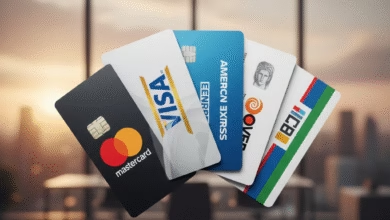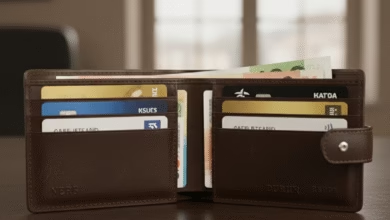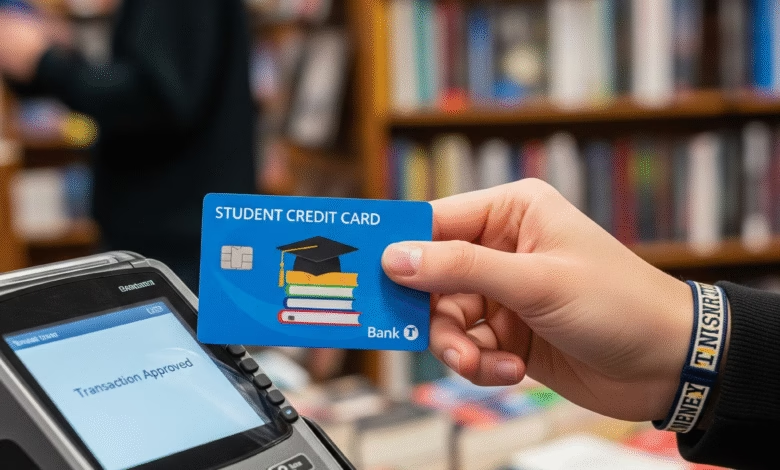
Starting college is a major step towards independence, and a big part of that journey is learning to manage your own finances. One of the most powerful tools you can have in your financial toolkit is a credit card. Used responsibly, it’s not just a convenient way to pay for books, late-night pizza, or a new laptop; it’s your first real opportunity to build a credit history. A strong credit history is essential for your future, impacting everything from renting an apartment and getting a car loan to securing a mortgage and even landing certain jobs.
But for many students with little to no income and no credit history, the world of credit cards can seem inaccessible and intimidating. This is where student credit cards come in. These cards are specifically designed for college students, with more lenient approval requirements, lower credit limits, and features tailored to the student lifestyle.
This comprehensive guide will walk you through everything you need to know about getting your first student credit card. We’ll cover the essential requirements, provide a step-by-step application process, explore the best cards on the market, and share crucial tips on how to use your new card responsibly to build an excellent credit score from day one.
What Exactly is a Student Credit Card and Why Do You Need One?
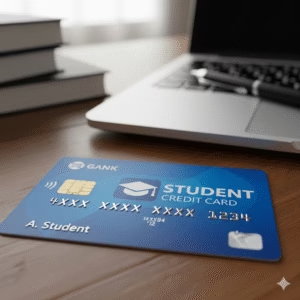
A student credit card is a type of unsecured credit card designed for individuals enrolled in a college or university. Financial institutions understand that students typically have a limited credit history and a lower income than the average adult. Therefore, they make these cards easier to qualify for.
The primary purpose of getting a student credit card isn’t just for making purchases; it’s to build credit. Every time you use your card and make an on-time payment, the card issuer reports this positive activity to the major credit bureaus (Experian, Equifax, and TransUnion). Over time, this creates a record of your financial reliability, which is compiled into your credit score. Starting this process early in college gives you a significant head start, so by the time you graduate, you’ll have a solid credit history to help you achieve your financial goals.
Key benefits include:
- Building Credit History: The most important benefit for your long-term financial health.
- Financial Education: It’s a practical tool for learning budgeting, responsible spending, and how interest works.
- Emergency Fund: It can be a crucial safety net for unexpected expenses, like a car repair or an emergency flight home.
- Rewards and Perks: Many student cards offer cash back on purchases, discounts on services like Amazon Prime, or even rewards for good grades.
Are You Eligible? Checking the Requirements Before You Apply
While student cards are easier to get than traditional cards, they still have qualification criteria. Before you start filling out applications, make sure you meet the basic requirements.
1. Age and Residency:
You must be at least 18 years old to apply for a credit card in your own name in the United States. If you are under 21, the rules are a bit stricter.
2. Proof of Enrollment:
As the name suggests, you must be a student. You’ll need to provide proof that you’re enrolled in a qualifying educational institution, which can be a two-year college, a four-year university, or even a trade school. You’ll typically need to provide the name of your school and your expected graduation date.
3. A Source of Income:
This is a critical requirement, especially for applicants under 21. The Credit CARD Act of 2009 requires that applicants under 21 must show proof of independent income or have a co-signer. This doesn’t necessarily mean you need a traditional job. Your “income” can include:
- Wages from a part-time or full-time job.
- Stipends from scholarships or grants.
- Allowances from parents or family that are regularly deposited into your bank account.
- Freelance work or income from a side hustle.
You need to be honest about your income. The amount doesn’t have to be huge, but issuers need to see that you have a way to pay back what you borrow.
4. Social Security Number (SSN) or Individual Taxpayer Identification Number (ITIN):
You will need an SSN to apply for most credit cards. Some issuers may accept an ITIN if you are an international student.
Your Pre-Application Checklist: Gathering Your Documents and Information

To ensure a smooth and quick application process, gather all the necessary information beforehand. It’s like preparing your ingredients before you start cooking.
You will need:
- Personal Information: Your full legal name, date of birth, and SSN or ITIN.
- Contact Information: Your permanent physical address (not a P.O. Box), phone number, and email address. You may also need your campus address.
- School Information: The name of your college or university, your major, and your year of enrollment (freshman, sophomore, etc.).
- Financial Information: Your total annual income (be prepared to list the sources) and your monthly rent or housing payment, if any.
- Bank Account Information: Some applications may ask for your checking or savings account details.
Step-by-Step Guide: How to Apply for Your First Student Card
Once you’ve confirmed your eligibility and gathered your documents, you’re ready to apply.
Step 1: Research and Compare Student Credit Cards
Don’t just apply for the first offer you see. Different cards have different features. Look for a card with no annual fee. This is a must-have for a student card. Then, compare other features:
- Rewards Program: Do you prefer cash back, or points for travel? Look at the earning rates. A card offering 2% cash back at gas stations and restaurants might be great if you commute and eat out often.
- Welcome Bonus: Some cards offer a sign-up bonus, like a statement credit after you spend a certain amount in the first few months.
- APR (Annual Percentage Rate): This is the interest rate you’ll be charged if you don’t pay your balance in full each month. As a beginner, your goal should always be to pay in full, but it’s still good to know the rate.
- Special Perks: Look for student-specific benefits, like a statement credit for maintaining a good GPA.
Some top-rated student cards for 2025 include the Discover it® Student Cash Back, Capital One SavorOne Student Cash Rewards Credit Card, and the Bank of America® Travel Rewards credit card for Students.
Step 2: Fill Out the Online Application
The easiest and fastest way to apply is online through the card issuer’s secure website. Carefully enter all the information you gathered. Double-check everything for typos, as a simple mistake like a wrong digit in your SSN can lead to an automatic denial.
Step 3: Read the Terms and Conditions
Before you submit, you must agree to the card’s terms and conditions. While it’s tempting to just scroll and click “agree,” take a minute to review the key details: the APR, any fees (like late payment fees), and the rewards structure.
Step 4: Submit and Wait for a Decision
After submitting, the issuer’s automated system will review your application. You could receive a decision in as little as 60 seconds. There are three possible outcomes:
- Approved: Congratulations! You’ll be shown your new credit limit and an estimated arrival date for your physical card.
- Denied: This is disappointing, but not the end of the world. The issuer is required to send you a letter explaining why.
- Pending Review: This is very common. It just means a human needs to look at your application. You can often check the status online or by phone after 24-48 hours.
What If You’re Denied? Your Next Steps

If your application is denied, don’t immediately apply for another card. Too many applications in a short period can hurt your credit score. Instead, do this:
- Wait for the Adverse Action Letter: This letter will list the specific reasons for the denial. It could be insufficient income, a lack of credit history, or an error in your application.
- Call the Reconsideration Line: Most banks have a number you can call to ask them to take a second look. Be polite, ask why you were denied, and explain why you believe you’d be a good customer. If the issue was a simple error, you can correct it.
- Consider a Secured Credit Card: If you’re denied due to a lack of credit history, a secured card is your best next move. With a secured card, you provide a refundable security deposit (usually $200-$500), which becomes your credit limit. You use it just like a regular credit card, and it reports to the credit bureaus, allowing you to build a positive history. After 6-12 months of responsible use, most issuers will upgrade you to an unsecured card and refund your deposit.
You’re Approved! How to Use Your New Card Responsibly
Getting the card is only the first step. Using it wisely is what builds your credit and sets you up for financial success.
- Rule #1: Pay Your Bill On Time, Every Time. This is the most important factor in your credit score. Even one late payment can cause significant damage. Set up automatic payments for at least the minimum amount due to avoid ever missing a payment.
- Rule #2: Pay Your Balance in Full. To avoid paying interest, pay your entire statement balance by the due date. Treating your credit card like a debit card (only spending what you have in the bank) is the best habit you can build.
- Rule #3: Keep Your Utilization Low. Don’t max out your card. Credit utilization—the percentage of your credit limit you’re using—is a major factor in your score. Aim to keep your balance below 30% of your limit at all times (e.g., if your limit is $1,000, try to keep your balance below $300).
- Rule #4: Use the Card Regularly. Make at least one small, planned purchase each month (like a coffee or a subscription service) to keep the account active and ensure positive payment history is being reported.
- Rule #5: Monitor Your Account. Check your transactions online regularly to track your spending and watch for any fraudulent activity.
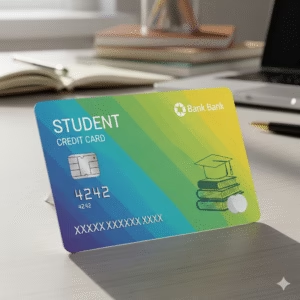
Getting a student credit card is a significant milestone. It’s a vote of confidence from a financial institution and an invaluable tool for your future. By choosing the right card and committing to responsible habits, you’ll not only navigate your college years with more financial flexibility but also graduate with a stellar credit score—one of the most valuable assets you can have.

